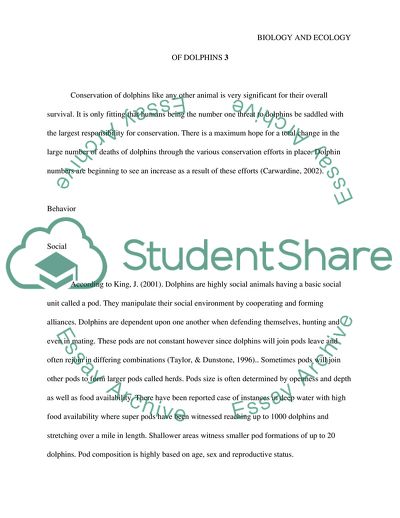Cite this document
(Biology and Ecology of Dolphins Essay Example | Topics and Well Written Essays - 1500 words, n.d.)
Biology and Ecology of Dolphins Essay Example | Topics and Well Written Essays - 1500 words. https://studentshare.org/biology/1843170-biology-and-ecology-of-dolphins
Biology and Ecology of Dolphins Essay Example | Topics and Well Written Essays - 1500 words. https://studentshare.org/biology/1843170-biology-and-ecology-of-dolphins
(Biology and Ecology of Dolphins Essay Example | Topics and Well Written Essays - 1500 Words)
Biology and Ecology of Dolphins Essay Example | Topics and Well Written Essays - 1500 Words. https://studentshare.org/biology/1843170-biology-and-ecology-of-dolphins.
Biology and Ecology of Dolphins Essay Example | Topics and Well Written Essays - 1500 Words. https://studentshare.org/biology/1843170-biology-and-ecology-of-dolphins.
“Biology and Ecology of Dolphins Essay Example | Topics and Well Written Essays - 1500 Words”. https://studentshare.org/biology/1843170-biology-and-ecology-of-dolphins.


